
Sorrento: The Jewel of the Amalfi Coast
Discover Sorrento, the gateway to the Amalfi Coast, where stunning views, rich history, and vibrant culture await. Explore ancient ruins, savor local cuisine, and unwind in paradise.
Nestled on the cliffs overlooking the Bay of Naples, Sorrento is a picturesque town that offers stunning views, rich history, and a vibrant culture. This charming destination is known for its beautiful scenery, from the breathtaking coastline to the lush lemon groves that fill the air with the scent of citrus. Sorrento is also a gateway to some of Italy's most famous sites. It's the perfect base for exploring the nearby Amalfi Coast, the ancient ruins of Pompeii, and the island of Capri. The town itself is filled with historic buildings, quaint streets, and delicious cuisine. Be sure to visit the Piazza Tasso, the heart of Sorrento, where you can enjoy a coffee while watching the world go by. Food lovers will delight in the local specialties such as fresh seafood, handmade pasta, and of course, the world-renowned limoncello. The friendly locals and relaxed atmosphere make Sorrento an ideal spot for a relaxing yet enriching holiday.
Local tips in Sorrento
- Visit the Marina Grande for a taste of traditional fishing village life and fresh seafood.
- Take a day trip to the nearby island of Capri for stunning views and luxury shopping.
- Explore the historic center of Sorrento and visit the 14th-century church, Chiesa di San Francesco.
- Don't miss the chance to tour a local limoncello factory and sample this famous liqueur.
- Use the Circumvesuviana train line for easy access to Pompeii and Naples.
Sorrento: The Jewel of the Amalfi Coast
Nestled on the cliffs overlooking the Bay of Naples, Sorrento is a picturesque town that offers stunning views, rich history, and a vibrant culture. This charming destination is known for its beautiful scenery, from the breathtaking coastline to the lush lemon groves that fill the air with the scent of citrus. Sorrento is also a gateway to some of Italy's most famous sites. It's the perfect base for exploring the nearby Amalfi Coast, the ancient ruins of Pompeii, and the island of Capri. The town itself is filled with historic buildings, quaint streets, and delicious cuisine. Be sure to visit the Piazza Tasso, the heart of Sorrento, where you can enjoy a coffee while watching the world go by. Food lovers will delight in the local specialties such as fresh seafood, handmade pasta, and of course, the world-renowned limoncello. The friendly locals and relaxed atmosphere make Sorrento an ideal spot for a relaxing yet enriching holiday.
When is the best time to go to Sorrento?
Iconic landmarks you can’t miss
Villa Comunale di Sorrento
Discover the serene beauty of Villa Comunale di Sorrento, a picturesque park offering breathtaking views and tranquil gardens in the heart of Sorrento.

Porto di Sorrento
Explore the picturesque Porto di Sorrento, a charming marina offering stunning views, delicious cuisine, and easy access to the enchanting Amalfi Coast.

Bagni Regina Giovanna
Explore the breathtaking Bagni Regina Giovanna, a historic archaeological site with stunning outdoor baths and captivating views in Sorrento, Italy.

Cathedral of Saints Philip and James
Explore the stunning Cathedral of Saints Philip and James in Sorrento, a beautiful blend of art, history, and spirituality in the heart of Italy's Amalfi Coast.

Parco di Villa Fiorentino
Discover the tranquil beauty of Parco di Villa Fiorentino in Sorrento, where art meets nature in a stunning garden setting.

Vallone dei Mulini
Explore Vallone dei Mulini in Sorrento, a stunning park where nature meets history in a serene and captivating setting.

I Giardini di Cataldo
Explore the lush gardens and taste exquisite local liquors and ice cream at I Giardini di Cataldo in beautiful Sorrento.

Chiostro di San Francesco
Discover the serene beauty and rich history of Chiostro di San Francesco, an art center in Sorrento that captivates with its stunning architecture and tranquil gardens.

Basilica Sant'Antonino
Discover the serene beauty and rich history of Basilica Sant'Antonino, Sorrento's cherished landmark dedicated to its patron saint.

Sorrento boat tours - Amalfi Coast Dream
Explore the breathtaking Amalfi Coast with Sorrento Boat Tours - a perfect blend of adventure, beauty, and unforgettable experiences.

Lift to Sorrento Marina
Discover breathtaking views and easy access to Sorrento's coastal beauty at the Lift to Sorrento Marina, your gateway to adventure.

IAMME IA! - Gray Line Amalfi Coast
Discover the Amalfi Coast's beauty with IAMME IA! - your trusted tour operator in Sorrento, offering boat rentals, guided tours, and more.

MBS Blu Charter Sorrento
Explore the breathtaking Amalfi Coast with MBS Blu Charter Sorrento—your gateway to unforgettable boat tours and hidden coastal gems.

Sorrento Experience
Discover Sorrento Experience, a cozy bed & breakfast in Sorrento offering charm, comfort, and convenient access to the stunning Amalfi Coast.

Museo Bottega della Tarsia Lignea
Explore the rich heritage of wood inlay craftsmanship at Museo Bottega della Tarsia Lignea in Sorrento, a must-visit art museum for culture lovers.

Unmissable attractions to see
Amalfi Coast
Experience the breathtaking beauty of the Amalfi Coast, where dramatic cliffs meet the Mediterranean, creating a picturesque paradise for every traveler.

Archaeological Park of Pompeii
Discover the ancient ruins of Pompeii, a UNESCO World Heritage Site, offering a profound glimpse into Roman civilization and the aftermath of Mount Vesuvius.

Royal Palace of Caserta
Discover the Royal Palace of Caserta, a stunning Baroque masterpiece and UNESCO World Heritage Site, surrounded by beautiful gardens and rich history.

Sansevero Chapel Museum
Explore the enchanting Sansevero Chapel Museum in Naples, home to the breathtaking Veiled Christ and a wealth of baroque art and history.

Ovo Castle
Discover the enchanting Ovo Castle, a historical gem in Naples, Italy, offering breathtaking views and rich cultural experiences.

Vesuvius National Park
Discover the breathtaking landscapes and rich history at Vesuvius National Park, where adventure meets nature near Naples, Italy.

Museo Archeologico Nazionale di Napoli
Explore the Museo Archeologico Nazionale di Napoli, home to extraordinary Greco-Roman artifacts and a rich history that captivates every visitor.

Castel Sant'Elmo
Discover the historical grandeur and stunning vistas of Castel Sant'Elmo, a must-visit castle in Naples, Italy.

Castel Nuovo
Explore Castel Nuovo in Naples, a stunning medieval castle showcasing rich history and breathtaking architecture in the heart of southern Italy.

Museo e Real Bosco di Capodimonte
Explore the artistic wonders and lush landscapes of Museo e Real Bosco di Capodimonte, a premier cultural destination in Naples, Italy.

Underground Naples
Explore the fascinating subterranean world of Underground Naples, where ancient history and modern culture intertwine beneath the bustling city.

Duomo di Napoli
Discover the Duomo di Napoli, a stunning cathedral rich in history, art, and religious significance, located in the vibrant heart of Naples.

Villa Rufolo
Discover the enchanting beauty and rich history of Villa Rufolo, a stunning landmark in Ravello offering breathtaking views of the Amalfi Coast.

Chiesa del Gesù Nuovo
Explore the architectural marvel of Chiesa del Gesù Nuovo, a historic baroque church in Naples, showcasing stunning art and serene ambiance.

Complesso Monumentale di Santa Chiara
Discover the historic Complesso Monumentale di Santa Chiara in Naples, a stunning monastery with beautiful architecture, serene cloisters, and rich cultural heritage.

Essential places to dine
O'Parrucchiano La Favorita
Discover the authentic taste of Italy at O'Parrucchiano La Favorita in Sorrento, where lush gardens meet exquisite cuisine.

La Cantinaccia del Popolo
Experience authentic Italian flavors at La Cantinaccia del Popolo in Sorrento—where every dish tells a story.

Ristorante Zi Ntonio
Experience authentic Italian seafood cuisine at Ristorante Zi Ntonio in Sorrento – where every dish tells a story.

Il Leone Rosso Ristorante
Experience authentic Italian cuisine at Il Leone Rosso Ristorante in Sorrento - where every dish tells a story of tradition and flavor.

Porta Marina Seafood
Discover fresh seafood and stunning views at Porta Marina Seafood in Sorrento - a must-visit destination for every traveler.

L'Antica Trattoria
Experience authentic Italian cuisine at L'Antica Trattoria in Sorrento, where tradition meets flavor in every dish.

Bagni Delfino
Discover Bagni Delfino in Sorrento - where exquisite seafood meets stunning coastal views for an unforgettable dining experience.

Foreigner's Club
Experience authentic Italian cuisine with stunning views at Sorrento's beloved Foreigner's Club – perfect for romantic dinners and special celebrations.

Trattoria dei Mori
Experience authentic Italian cuisine at Trattoria dei Mori in Sorrento, where fresh seafood meets tradition for an unforgettable dining experience.

Fuoro
Experience authentic Italian and seafood cuisine at Ristorante Fuoro in Sorrento – where flavor meets tradition amidst stunning coastal views.

Torna a Surriento Trattoria
Discover authentic Italian flavors at Torna a Surriento Trattoria, where delicious pizzas and warm hospitality await you in scenic Sorrento.
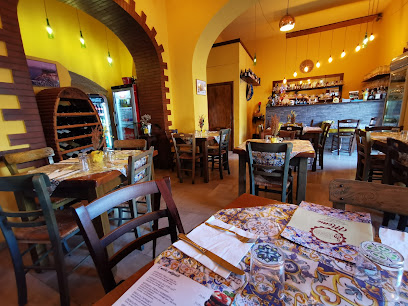
Ristorante 'da Filippo'
Experience authentic Italian flavors at Ristorante 'da Filippo', where family-friendly dining meets stunning Mediterranean cuisine in Sorrento.

AZZ! Italian Tavern
Discover AZZ! Italian Tavern in Sorrento - a culinary treasure offering authentic Italian flavors in a charming atmosphere.

Enjoy Restaurant
Experience authentic Italian cuisine at Enjoy Restaurant in Sorrento - where fresh ingredients meet delightful flavors.

Master Hosts
Experience authentic Italian flavors at Master Hosts in Sorrento - your go-to destination for delicious pizzas and traditional dishes.

Markets, malls and hidden boutiques
Mary's Shop Sorrento
Explore the beauty of handcrafted leather goods in Sorrento at Mary's Shop, where tradition meets contemporary style.

Antica Sartoria - Sorrento
Discover handcrafted elegance at Antica Sartoria, Sorrento's premier clothing store, where Italian style meets coastal charm.

Corner Shop Sorrento
Discover the rich flavors of Italy at Corner Shop Sorrento, your go-to wine bar and grocery store for authentic local delicacies.

Mastellone Giuseppe Inlaid wood Showroom & Gift Shop
Explore the exquisite craftsmanship of inlaid wood at Mastellone Giuseppe Showroom, a must-visit handicraft gem in Sorrento, Italy.
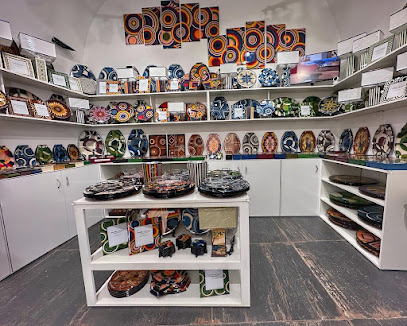
GS Gargiulo Inlaid Sorrento
Explore the exquisite craftsmanship of inlaid wood art at GS Gargiulo Inlaid Sorrento, where tradition meets creativity in a beautiful setting.
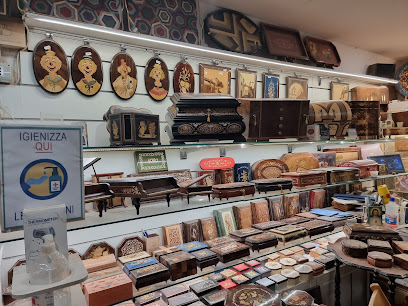
La Botteguccia
Discover the artistic charm of Sorrento at La Botteguccia, a craft store offering unique, handcrafted treasures that capture the essence of Italian craftsmanship.

Boutique Galiano Acanfora
Discover exquisite fashion at Boutique Galiano Acanfora, your go-to store for stylish clothing, accessories, and shoes in the heart of Sorrento.

Christmas Shop
Discover the magic of the holiday season at the Christmas Shop in Sorrento, where festive gifts and enchanting decorations await every visitor.
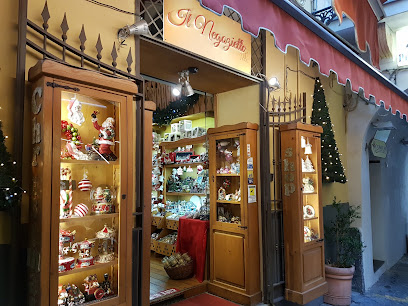
Ballerì Sorrento
Explore Ballerì Sorrento for chic women's clothing, trendy shoes, and stylish accessories in a charming boutique atmosphere.

L`Artigiano Sorrentino
Explore L'Artigiano Sorrentino, where exquisite Italian leather craftsmanship meets the heart of Sorrento's vibrant culture.

Sandali Siniscalchi
Discover exquisite handmade sandals and accessories at Sandali Siniscalchi in Sorrento, where Italian craftsmanship meets vibrant style.

Stinga Tarsia.
Discover exquisite handicrafts and unforgettable souvenirs at Stinga Tarsia in Sorrento, where local artistry meets Italian charm.

Antonella Ferrante Sorrento
Experience the allure of Italian fashion at Antonella Ferrante in Sorrento, where every accessory tells a story of elegance and craftsmanship.

Peppe & Italia
Discover Italian elegance at Peppe & Italia, Sorrento's top destination for stylish men's clothing and accessories.

Unique Concept Store
Discover unique gifts and stylish fashion accessories at the Unique Concept Store in Sorrento, a must-visit for every traveler seeking Italian charm.

Essential bars & hidden hideouts
Fauno Bar
Experience authentic Italian cuisine and vibrant atmosphere at Fauno Bar, a charming café in the heart of Sorrento.

Bar Ercolano SNC di Ercolano Luigi
Discover the vibrant atmosphere of Bar Ercolano in Sorrento, where delicious snacks and refreshing drinks await in a picturesque setting.

Chaplin's
Experience the warmth of Ireland at Chaplin's, a lively pub in Sorrento where great food and friendly faces come together.

Bar del Carmine
Experience the authentic taste of Italy at Bar del Carmine, a delightful deli and bistro in the heart of Sorrento, perfect for food lovers.
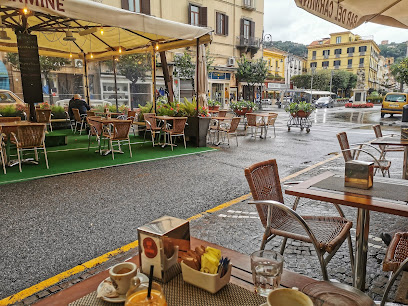
D'Anton design & bistrot
Discover the stylish D'Anton Design & Bistrot in Sorrento, where exquisite Italian cuisine meets a vibrant atmosphere.
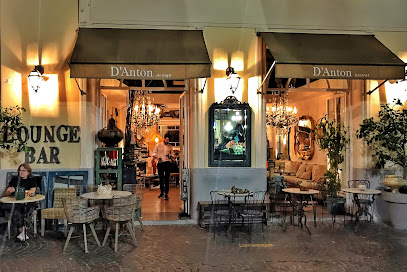
Guarracino Lounge Bar
Discover the enchanting Guarracino Lounge Bar in Sorrento - where Italian flavors meet Mediterranean charm, all with stunning views.
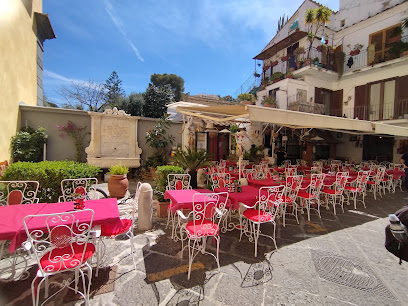
Banana Split
Experience the vibrant atmosphere of Banana Split in Sorrento, where Irish charm meets Italian flair in a perfect pub getaway.

The Horse Shoe Bar
Experience the vibrant atmosphere and delightful flavors at The Horse Shoe Bar in Sorrento, a perfect blend of drinks and culinary delights.

The Kiosk Bar
Discover the charm of Sorrento at The Kiosk Bar, where refreshing drinks and vibrant atmosphere meet in the heart of Italy's stunning coastal town.
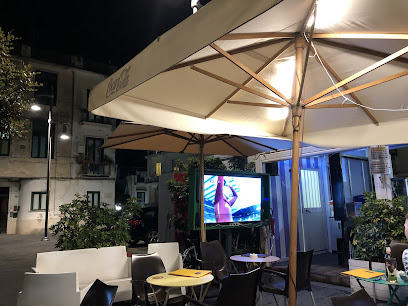
Filou Club
Experience the vibrant nightlife of Sorrento at Filou Club, a premier piano bar and nightclub with live music and a lively atmosphere.

Tasso Lounge Bar
Discover the vibrant Tasso Lounge Bar in Sorrento, where delightful cuisine meets a lively bar atmosphere, perfect for an unforgettable Italian experience.

Shot Bar Sorrento
Discover the vibrant nightlife of Sorrento at Shot Bar, the ultimate destination for cocktails, dancing, and unforgettable memories.

Cornelia Cocktail’s & More
Experience Sorrento's vibrant nightlife at Cornelia Cocktail’s & More, where expertly crafted cocktails meet a lively atmosphere.

Bollicine Wine Bar
Discover the charm of Bollicine Wine Bar in Sorrento, where exquisite wines and delightful bites create an unforgettable experience.

SHUB - Secret Cocktail Bar
Experience the enchanting atmosphere and innovative cocktails at SHUB - Secret Cocktail Bar, Sorrento's hidden nightlife gem.

Travel experiences inspired by this city
Explore more travel diariesLocal Phrases
-
- HelloCiao
[chow] - GoodbyeArrivederci
[ah-ree-veh-dehr-chee] - YesSì
[see] - NoNo
[no] - Please/You're welcomePer favore/Prego
[pehr fah-voh-reh/preh-goh] - Thank youGrazie
[grah-tsyeh] - Excuse me/SorryScusa/Scusami
[skoo-sah/skoo-sah-mee] - How are you?Come stai?
[koh-meh stai] - Fine. And you?Bene. E tu?
[beh-neh. eh too] - Do you speak English?Parli inglese?
[pahr-lee een-gleh-zeh] - I don't understandNon capisco
[non kah-pee-skoh]
- HelloCiao
-
- I'd like to see the menu, pleaseVorrei vedere il menù, per favore
[vohr-ray veh-deh-reh eel meh-noo, pehr fah-voh-reh] - I don't eat meatNon mangio carne
[non mahn-joh kahr-neh] - Cheers!Salute!
[sah-loo-teh] - I would like to pay, pleaseVorrei pagare, per favore
[vohr-ray pah-gah-reh, pehr fah-voh-reh]
- I'd like to see the menu, pleaseVorrei vedere il menù, per favore
-
- Help!Aiuto!
[ah-yoo-toh] - Go away!Vattene!
[vaht-teh-neh] - Call the Police!Chiama la polizia!
[kee-ah-mah lah poh-lee-tsyah] - Call a doctor!Chiama un dottore!
[kee-ah-mah oon doht-toh-reh] - I'm lostMi sono perso
[mee soh-no pehr-soh] - I'm illSto male
[stoh mah-leh]
- Help!Aiuto!
-
- I'd like to buy...Vorrei comprare...
[vohr-ray kohm-prah-reh] - I'm just lookingSto solo guardando
[stoh soh-loh gwar-dahn-doh] - How much is it?Quanto costa?
[kwahn-toh koh-stah] - That's too expensiveÈ troppo caro
[eh troh-poh kah-roh] - Can you lower the price?Puoi abbassare il prezzo?
[pwah-ee ahb-bahs-sah-reh eel preht-soh]
- I'd like to buy...Vorrei comprare...
-
- What time is it?Che ora è?
[keh oh-rah eh] - It's one o'clockÈ l'una
[eh loo-nah] - Half past (10)Sono le dieci e mezza
[soh-no leh dee-eh-chee eh meh-tzah] - MorningMattina
[mah-tee-nah] - AfternoonPomeriggio
[poh-meh-ree-joh] - EveningSera
[seh-rah] - YesterdayIeri
[yeh-ree] - TodayOggi
[oh-jee] - TomorrowDomani
[doh-mah-nee] - 1Uno
[oo-no] - 2Due
[doo-eh] - 3Tre
[treh] - 4Quattro
[kwah-troh] - 5Cinque
[cheen-kweh] - 6Sei
[say] - 7Sette
[seh-tteh] - 8Otto
[oh-ttoh] - 9Nove
[noh-veh] - 10Dieci
[dee-eh-chee]
- What time is it?Che ora è?
-
- Where's a/the...?Dov'è un/il...?
[doh-veh oon/eel] - What's the address?Qual è l'indirizzo?
[kwahl eh leen-dee-reet-tssoh] - Can you show me (on the map)?Puoi mostrarmi (sulla mappa)?
[pwah-ee mohs-trahr-mee (sool-lah mahp-pah)] - When's the next (bus)?Quando è il prossimo (autobus)?
[kwahn-doh eh eel prohs-sih-moh (ow-toh-boos)] - A ticket (to ....)Un biglietto (per ....)
[oon beel-lyet-toh (pehr)]
- Where's a/the...?Dov'è un/il...?
History of Sorrento
-
Sorrento, known as Surrentum in ancient times, boasts a history that dates back to the Greek and Roman periods. The city was a significant hub in the ancient world due to its strategic position overlooking the Bay of Naples. Sorrento was particularly famous for its production of wine and olive oil, commodities that were highly prized by the Romans.
-
During the Roman era, Sorrento flourished as a luxurious resort destination for the Roman elite. The city's villas, adorned with intricate mosaics and frescoes, were renowned for their opulence. Notable Roman figures, including the famed poet Virgil, are said to have been inspired by the stunning landscapes of Sorrento.
-
In the medieval period, Sorrento became a battleground for various powers vying for control of the region. The city was part of the Duchy of Amalfi and later came under the influence of the Normans, Swabians, and Angevins. During this time, Sorrento's defensive walls and fortifications were strengthened to protect against frequent pirate raids.
-
The Renaissance and Baroque periods saw a resurgence of art and culture in Sorrento. The city became a center for intellectual and artistic activity, with many churches and palaces being built or renovated in the Baroque style. Notable architectural examples include the Sorrento Cathedral and the Church of San Francesco.
-
In the 19th century, Sorrento became a popular destination for European aristocrats undertaking the Grand Tour. The city's picturesque beauty and mild climate attracted writers, artists, and composers. Notable figures such as Lord Byron, Johann Wolfgang von Goethe, and Richard Wagner visited Sorrento, leaving behind a legacy of literary and artistic works inspired by their stay.
-
Today, Sorrento is a renowned tourist destination, celebrated for its stunning coastal views, historic sites, and vibrant culture. The city's economy thrives on tourism, and it continues to draw visitors from around the world who come to experience its rich history, delicious cuisine, and welcoming atmosphere.
Sorrento Essentials
-
Sorrento is accessible by several means of transportation. The nearest major airport is Naples International Airport (Aeroporto di Napoli-Capodichino), approximately 50 kilometers away. From Naples, you can take a direct train from Napoli Centrale to Sorrento via the Circumvesuviana line, which takes about an hour. Alternatively, there are ferry services from Naples to Sorrento, offering a scenic view of the Bay of Naples. For those driving, Sorrento is connected by the A3 motorway, followed by the SS145 state road.
-
Sorrento is relatively compact, making it easy to explore on foot. For local transportation, the Circumvesuviana train line connects Sorrento with nearby towns such as Pompeii, Herculaneum, and Naples. Buses operated by EAV and SITA Sud provide services within Sorrento and to the Amalfi Coast. Taxis are available but can be more expensive. Car rentals are an option, but parking can be challenging and costly in the town center.
-
The official currency in Sorrento, like the rest of Italy, is the Euro (EUR). Credit and debit cards are widely accepted in hotels, restaurants, and shops. However, it's advisable to carry some cash for smaller establishments and markets. ATMs are plentiful throughout Sorrento, and currency exchange services are available at banks and exchange offices.
-
Sorrento is generally considered safe for tourists. However, standard precautions should be taken, especially in crowded areas where pickpocketing can occur. Be cautious with your belongings and avoid displaying valuables. The town center and main tourist areas are safe, but it's wise to stay vigilant, particularly at night. There are no specific high-crime neighborhoods targeting tourists, but always exercise common sense.
-
In case of emergency, dial 112 for police, 118 for medical emergencies, and 115 for fire services. The local hospital, Ospedale Santa Maria della Misericordia, is equipped to handle medical emergencies. Pharmacies are available for minor health issues, and many staff speak English. It is highly recommended to have travel insurance that covers medical emergencies.
-
Fashion: Do dress smartly, especially in the evening. Avoid overly casual or beachwear when dining out. Religion: Do respect local customs, especially when visiting churches. Cover your shoulders and knees. Public Transport: Do validate your ticket before boarding trains and buses. Don't forget to carry cash for bus tickets. Greetings: Do greet people with a 'Buongiorno' (Good morning) or 'Buonasera' (Good evening). A handshake is common. Eating & Drinking: Do try local specialties like Gnocchi alla Sorrentina and Limoncello. Don’t rush meals; dining is a leisurely experience.
-
To experience Sorrento like a local, visit the weekly market held every Tuesday in Via San Renato for fresh produce and local goods. Try the local gelato from smaller, family-run gelaterias. Engage with locals; they are friendly and often happy to share tips and stories. Don’t miss the sunset views from the Villa Comunale Park. For a unique experience, take a boat tour to explore the nearby islands of Capri and Ischia.
Trending Landmark in Sorrento
-
Villa Comunale di Sorrento
-
Porto di Sorrento
-
Bagni Regina Giovanna
-
Cathedral of Saints Philip and James
-
Parco di Villa Fiorentino
-
Vallone dei Mulini
-
I Giardini di Cataldo
-
Chiostro di San Francesco
-
Basilica Sant'Antonino
-
Sorrento boat tours - Amalfi Coast Dream
-
Lift to Sorrento Marina
-
IAMME IA! - Gray Line Amalfi Coast
-
MBS Blu Charter Sorrento
-
Sorrento Experience
-
Museo Bottega della Tarsia Lignea
Nearby Cities to Sorrento
-
Things To Do in Positano
-
Things To Do in Capri
-
Things To Do in Pompeii
-
Things To Do in Amalfi
-
Things To Do in Herculaneum
-
Things To Do in Ravello
-
Things To Do in Naples
-
Things To Do in Matera
-
Things To Do in Rome
-
Things To Do in St. Peter's Square
-
Things To Do in Apostolic Palace
-
Things To Do in Vatican Necropolis
-
Things To Do in St. Peter's Basilica
-
Things To Do in Sistine Chapel
-
Things To Do in Gregorian Etruscan Museum

























